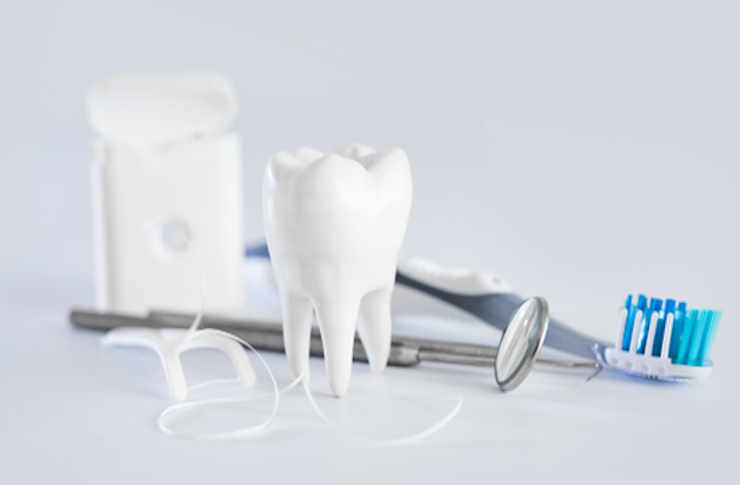Affordable Dental Care: Transform Your Smile Without Breaking the Bank
Exploring options for dental health can reveal potentially more manageable costs. This guide examines various approaches to teeth care that may help make dental treatments more accessible for many individuals, from preventive strategies to understanding treatment alternatives that could offer more budget-friendly results.

Dental care is an essential aspect of overall health and wellbeing, yet financial concerns cause many people to postpone necessary treatments. While dental care costs can be significant, understanding available options and making informed choices may help you find dental care solutions that better align with your budget while still addressing your oral health needs.
How to Transform Your Smile on a Budget
Enhancing your smile may not always require the most expensive cosmetic procedures. Several potentially more affordable alternatives could make a difference in your appearance and dental health. Professional teeth cleaning typically costs less than major dental work and can remove many stains while improving overall oral health. At-home whitening kits, though generally less effective than professional treatments, represent a lower-cost option that may provide noticeable results for some individuals.
For addressing issues like chips or cracks, dental bonding often costs approximately half the price of veneers while still improving appearance. Many dental practices offer payment plans for cosmetic procedures, potentially making treatments more accessible by distributing costs over time. Additionally, dental schools frequently provide supervised cosmetic services at reduced rates, offering care while helping students gain practical experience.
Key Treatments for Budget-Friendly Dental Care
Preventive care represents one of the most cost-effective approaches to dental health. Regular brushing with fluoride toothpaste, daily flossing, and using antimicrobial mouthwash may significantly reduce the need for expensive treatments later. Scheduling routine dental check-ups typically allows for earlier detection of potential problems before they develop into conditions requiring more costly interventions.
For necessary treatments, dental insurance plans or discount programs might substantially reduce out-of-pocket expenses for eligible individuals. Community health centers often provide basic dental services at adjusted rates based on financial circumstances. Some dental practices also offer in-house membership plans that include preventive care and discounts on treatments for a monthly or annual fee that may be more manageable for some patients.
How to Address Tooth Pain Affordably
When experiencing tooth pain, seeking timely attention is important to prevent potential escalation into more serious problems that could require more extensive treatment. Over-the-counter pain relievers such as ibuprofen may provide temporary relief while arranging for professional care. Many dentists offer emergency appointments to diagnose the issue, though examination fees vary considerably.
For infections requiring antibiotics, generic medications typically cost less than brand-name alternatives. While tooth extraction is generally less expensive than root canal therapy, preserving natural teeth is usually preferable when medically appropriate and financially feasible. Some dental offices offer adjusted fees based on income or hardship programs for urgent pain relief treatments for qualifying patients.
Finding the Right Dentist for Affordable Treatments
Researching dental providers may reveal options with varying fee structures. Independent dentists sometimes charge different rates than corporate dental chains and might offer more flexible payment arrangements. Dental schools and hygiene programs provide supervised care at reduced rates compared to many private practices—sometimes 50-70% less, though availability varies by location.
Online platforms like Dental Plans and healthcare.gov can help compare dental insurance options or discount plans in your region. When consulting with potential dentists, discussing financial concerns upfront may be beneficial. Many practices offer initial consultations where you can inquire about payment options, sliding scales, or discount programs before committing to treatment.
Essential Procedures and Affordable Fixes for Your Teeth
Understanding which dental procedures might deliver good value can help prioritize dental spending. Dental sealants, which typically cost $30-$60 per tooth, provide protection against cavities, potentially preventing more expensive treatments later. Similarly, fluoride treatments strengthen enamel and help prevent decay, usually costing $20-$50 depending on location and provider.
For missing teeth, partial dentures offer an alternative to implants or bridges, typically costing $300-$1,500 compared to several thousand dollars for other options. Composite fillings, while usually more expensive than amalgam, provide natural-looking results at intermediate price points. For cosmetic concerns, professional teeth cleaning and polishing can improve appearance for approximately $75-$200, considerably less than extensive cosmetic procedures.
Comparison of Affordable Dental Care Options
Different approaches to dental care offer varying benefits and cost structures. Comparing these options may help inform decisions about oral health investments based on individual circumstances.
| Dental Care Option | Approximate Cost Range | Key Benefits | Potential Fit For |
|---|---|---|---|
| Dental Insurance | $15-$50 monthly | Often covers preventive care, reduced rates on procedures | Regular dental service users |
| Dental Discount Plans | $80-$200 annually | Immediate savings, no annual limits | Those needing multiple procedures |
| Dental Schools | 50-70% less than many private practices | Comprehensive supervised care | Patients with flexible schedules |
| Community Health Centers | Sliding scale based on income | Basic dental services at reduced rates | Income-qualifying patients |
| Payment Plans/CareCredit | Varies by treatment | Spreads cost over time, often interest-free initially | Larger dental procedures |
| In-House Membership Plans | $250-$400 annually | Includes preventive care, discounts on treatments | Patients without insurance |
Prices, rates, or cost estimates mentioned in this article are based on the latest available information but may change over time. Independent research is advised before making financial decisions.
Preventive Strategies to Minimize Dental Expenses
Diligent prevention may help reduce future dental costs for many individuals. Using an electric toothbrush, while initially more expensive than manual options, can provide thorough cleaning that might help reduce future treatment needs. Water flossers offer another preventive tool that can be particularly valuable for those with braces or bridges.
Dietary choices significantly impact dental health—limiting sugary foods and acidic beverages helps prevent decay and erosion. For those who grind their teeth, over-the-counter night guards ($20-$100) offer a more accessible alternative to custom dental appliances ($300-$500), though effectiveness varies. Regular dental visits for professional cleanings and examinations represent an upfront cost that may help identify issues before they require more extensive intervention.
Maintaining oral health involves both personal care and professional services. By combining preventive practices, consumer research, and strategic use of available resources, many people can work toward better dental health while managing costs. Remember that addressing basic dental care needs promptly often prevents more complex procedures later, potentially making dental care a worthwhile health investment for the long term.
This article is for informational purposes only and should not be considered medical advice. Please consult a qualified healthcare professional for personalized guidance and treatment.




